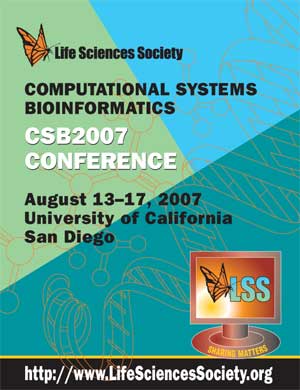Improving the Design of Genechip Arrays by Combining Placement and Embedding
Ségio Anibal de Carvalho*, Sven Rahmann
Computational Methods for Emerging Technologies (COMET), Genome Informatics, Technische Fakultät, CeBiTec, Bielefeld University, D-33594 Bielefeld, Germany. Sergio.Carvalho@cebitec.uni-bielefeld.de
Proc LSS Comput Syst Bioinform Conf. August, 2007. Vol. 6, p. 417-427. Full-Text PDF
*To whom correspondence should be addressed.

The microarray layout problem is a generalization of the border length minimization problem and asks to distribute oligonucleotide probes on a microarray and to determine their embeddings in the deposition sequence in such a way that the overall quality of the resulting synthesized probes is maximized. Because of its inherent computational complexity, it is traditionally attacked in several phases: partitioning, placement, and re-embedding. We present the first algorithm, Greedy+, that combines placement and embedding and results in improved layouts in terms of border length and conflict index (a more realistic measure of probe quality), both on arrays of random probes and on existing Affymetrix GeneChip® arrays. We also present a large-scale study on how the layouts of GeneChip arrays have improved over time, and show how Greedy+ can further improve layout quality by as much as 8% in terms of border length and 34% in terms of conflict index.
[CSB2007 Conference Home Page]....[CSB2007 Online Proceedings]....[Life Sciences Society Home Page]